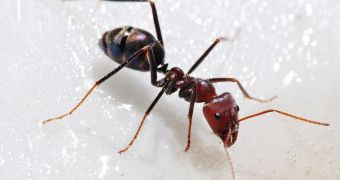In a new scientific study, investigators managed to discover about 13 species of ants in the middle of New York City. The insects were discovered even in the most unlikely, highly-urbanized areas.
The research demonstrated that the ant population of the city is as diverse as its inhabitants. The three major streets that were investigated revealed a surprisingly large population of the insects.
A group of entomologists analyzed over 6,619 individual ants in NYC, and determined that they came from 13 species, all of which were located on 44 medians.
Among the species were ants that farmed aphids, nest raiders, invasive ants originating in Asia, and forest dwellers. All of these insects form a closed and dynamic ecosystems, the researchers say.
“Even in these areas that we don't pay attention to, these areas we don't think there is any ecological value to […] those are still seen as habitat by some organisms,” explains James Danoff-Burg.
The expert holds an appointment as a research scientist at the Columbia University, in Ithaca, New York. He adds that the research stresses again the importance of conserving small ecosystems, regardless of where they are found on the map.
The scientist explains that, of the 13 ant species discovered, 10 were native to the United States. This is a very large number of insects to be found in such a confined space, the investigations team says.
Regardless of the crowded and densely-populated environment they live in, ants have managed to develop just fine, taking advantage of clover plants, bushes and trees to set up their nests.
Numerous pollinating species use the same habitat as well, and they provide a constant and rich food source for the insects. Danoff-Burg says that some colonies are placed in the vicinity of garbage cans.
In the actual study, ants were caught by either setting traps, or by manually browsing through the ground. Details of the work appear in the October 5 issue of the open-access scientific journal PLoS ONE, which is published by the Public Library of Science.
The researchers, which included former graduate student at Columbia Marko Pećarević, say that doing biology in New York City also has a social angle that is worth investigating.
“It's very curious that nobody really was watching me as I was doing that, nobody was showing any interest in what I was doing except maybe a bus driver or a grandmother,” Pećarević says of when he was searching for ants on the side of the road.
“I even had police cars standing right next to me,” he adds. “The funny thing about doing biology in New York City is you kind of take advantage of the feigned (indifference) of New Yorkers,” Danoff-Burg adds.
“In rural situations, people will have no problem coming over to ask me what I am doing,” he concludes, quoted by LiveScience.

 14 DAY TRIAL //
14 DAY TRIAL //